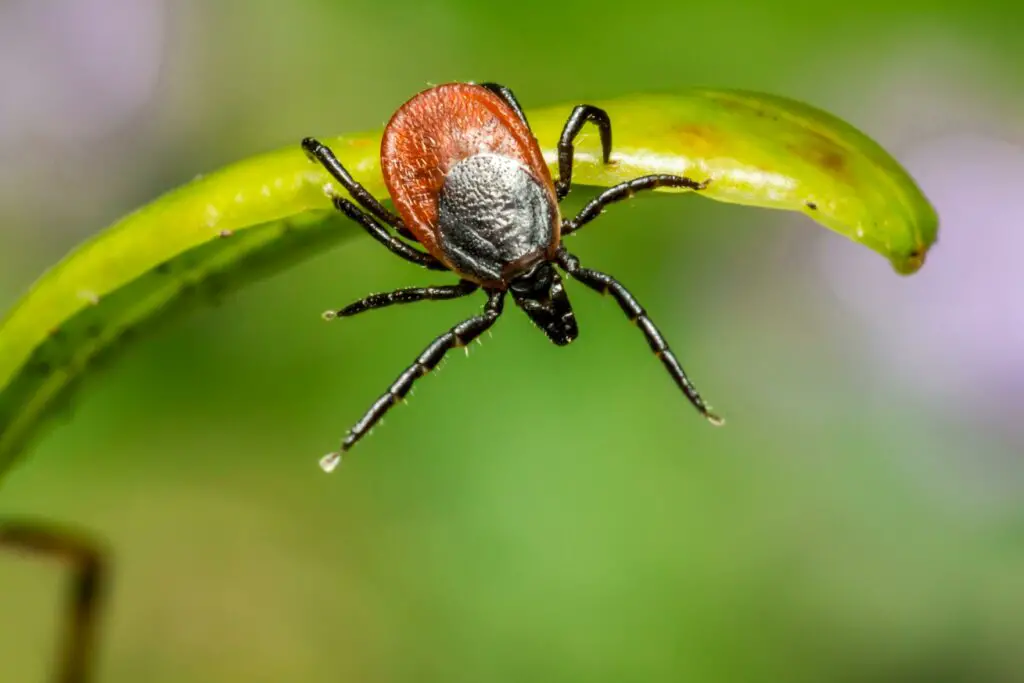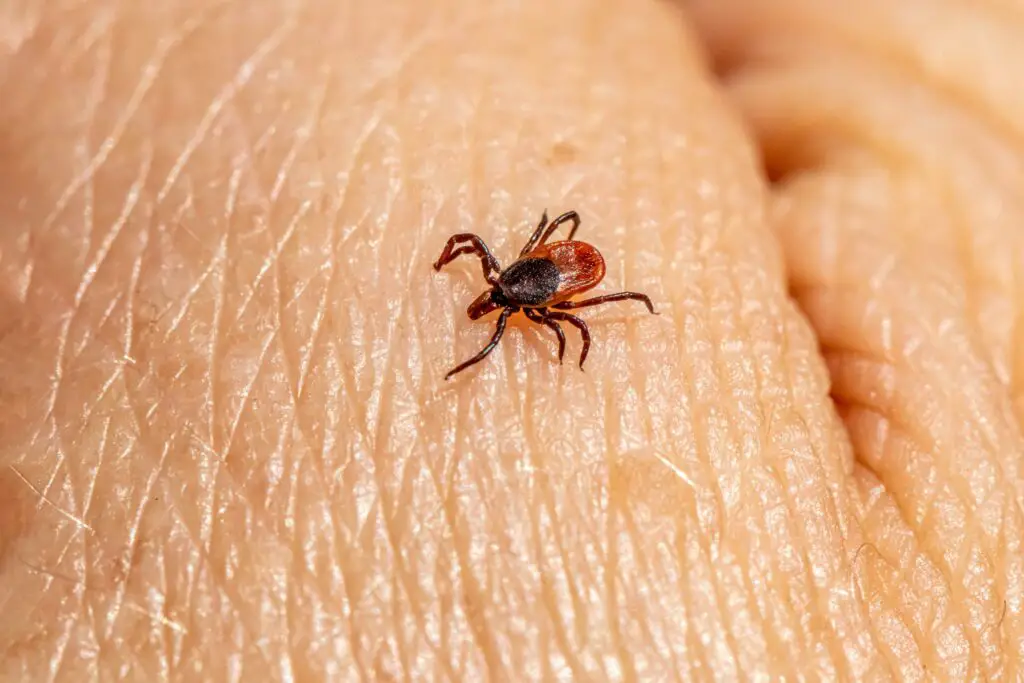Nature is the home to an incredibly versatile array of species, but ticks are definitely one of those that we tend to avoid at all costs.
These tiny arachnids, that are related to spiders, mites, and scorpions, are in fact parasites that survive by attaching themselves to larger animals and feeding on their blood. Humans aren’t spared either. Sadly, these insects carry harmful bacteria that can spread disease to people.
Sadly, tick-borne diseases are at an all-time high, with about 50,000 cases reported each year, and far more going unreported.

There are different types of ticks, and unfortunately, they sometimes find their way to people’s homes. The types most commonly found in homes are the black-legged tick, the dog tick, and the brown dog tick.
- Black-legged Ticks – known as deer ticks, these ticks are typically brown or black in color and have a flattened, oval-shaped body. They are commonly found in wooded areas and can transmit Lyme disease.
- Dog Ticks are larger and can range in color from brown to reddish-brown. They have a tough, shield-shaped body. Dog ticks can transmit diseases such as Rocky Mountain spotted fever.
- Brown Dog Ticks are brown in color and have a slender body.
Although the tick season is between March and October, or sometimes longer, we should be wary of this insects all year round. In fact,if beaten by a tick, a person can develop symptoms even after two or three months.

The bite itself isn’t painful and can cause swelling, itchiness, blistering, and bruising. The bad thing is that ticks also carry and transmit severe diseases, most commonly Lyme disease, as well as Rocky Mountain spotted fever, ehrlichiosis, and babesiosis.
Initially, Lyme disease develops as a circular red ‘bull’s eye’ rash around the site of a tick bite. However, not everyone gets a rash and you should also watch out for a flu-like illness with fever, headache, tiredness and general aches and pains.
The best way to prevent being bitten by a tick is to avoid tall grasses and areas where ticks thrive (such as moorlands and woodlands), especially during the warmer months.
In case you do get bitten, you should remove the tick as soon as possible in order to prevent infections.

These are some of the ways of safe removal.
- Use fine-tipped tweezers: Use clean, fine-tipped tweezers to grasp the tick as close to the skin as possible.
- Pull gently: Apply steady upward pressure, being careful not to squeeze or crush the tick. Aim to remove the tick in one smooth motion without twisting or jerking. Twisting or jerking can cause the tick’s head to break off and stay inside the skin, where it can still transmit disease.
- Clean the area: After removing the tick, clean the affected area with soap and water or an antiseptic solution. Monitor the site of the bite for any signs of infection or a rash, and consult a healthcare professional if necessary.

If by any chance ticks find their way into your home, take immediate action in order to prevent infestation. Most times, ticks are brought into your home in case they stick on your clothes or onto your pets.
- Isolate the area: If you have identified the presence of ticks in a specific area, keep pets and children away from that space.
- Wear protective gear: Put on gloves and a long-sleeved shirt to protect yourself from potential tick bites.
- Clean the area: Clean the area where you found the tick. If it is in bedding, wash the sheets. Inspect the area to ensure there are no more ticks that are present. Dispose of the tick by either flushing it down the toilet or sealing it in a container or ziplock bag before placing it in the trash.
Granddad’s Hidden Secret: Girl Discovers Stash in Forbidden Old Mattress After His Death

Brooke’s Discovery: Uncovering Truth and Justice
After her grandfather’s death, Brooke stood in his bedroom, memories flooding back. She gazed at the familiar bed, recalling his stern warning: “Don’t touch that mattress; it has secrets.” Drawn by curiosity, she lifted the mattress and discovered a hidden stash—old newspaper clippings, photographs, and a leather-bound book documenting her parents’ fatal car accident.
As she sifted through the papers, her heart raced. Her grandfather believed the police had covered up the truth, favoring a wealthy drunk driver. Fueled by determination, Brooke vowed to uncover the injustice that had long haunted her family.
The next day, she visited the local newspaper, presenting her findings. The editor, intrigued by her passionate plea for justice, agreed to publish the story. The article quickly gained traction, igniting outrage in the community and prompting the police to reopen the case.
Brooke faced scrutiny and threats, but she remained undeterred, sharing her story and rallying support on social media. With each revelation, more families came forward, exposing a web of corruption that spanned the town.
As the trial approached, Brooke testified, sharing her pain and her grandfather’s relentless search for truth. When the jury returned a guilty verdict against the driver, relief washed over her. Justice had been served.
In the aftermath, changes swept through the town, and Brooke found purpose in helping others seek justice. Her grandfather’s legacy lived on, inspiring her to continue the fight against corruption and advocate for those silenced by power.



Leave a Reply